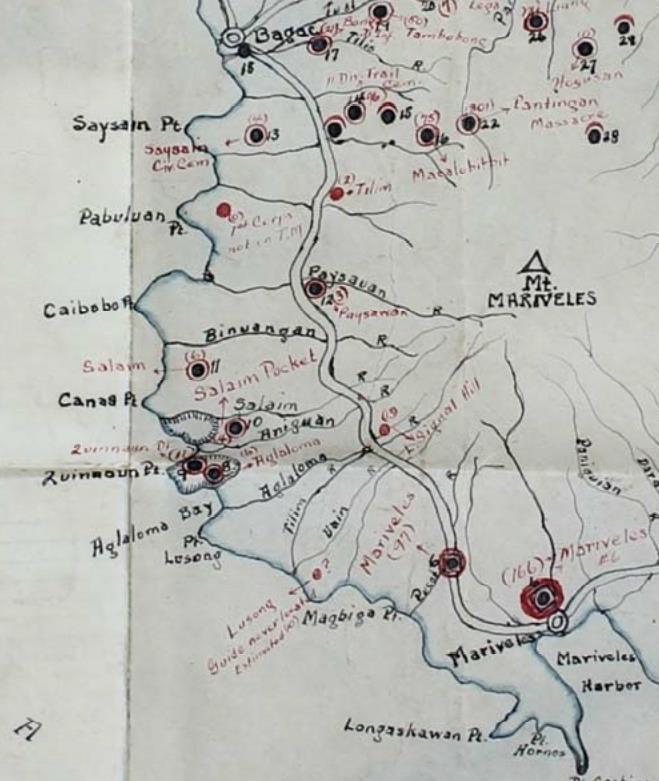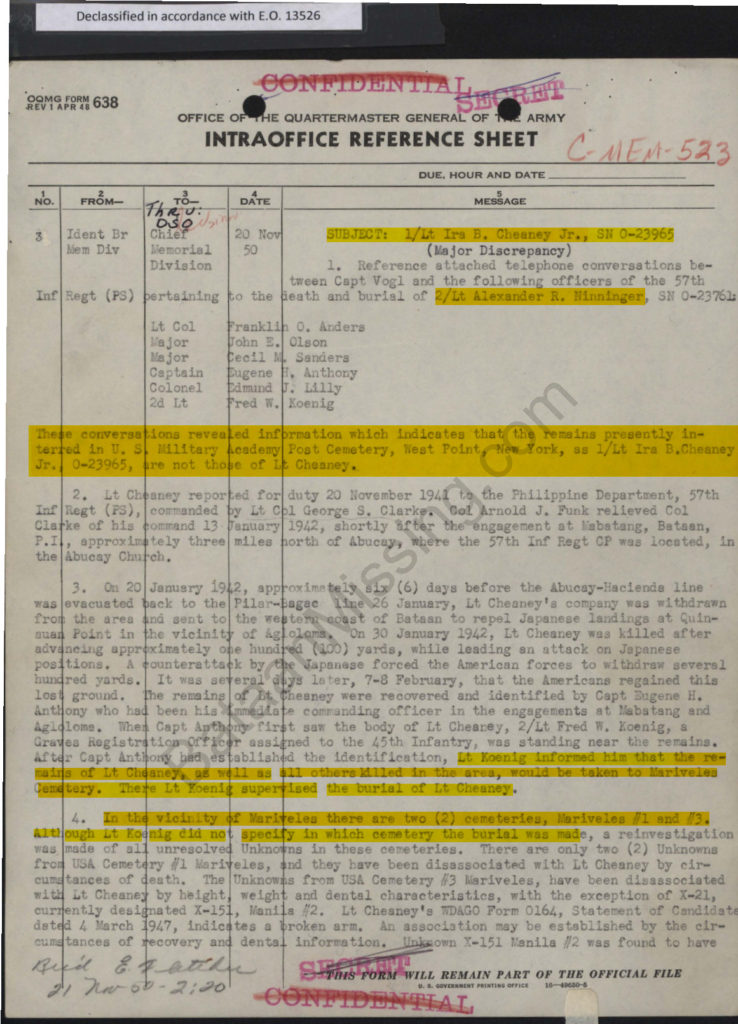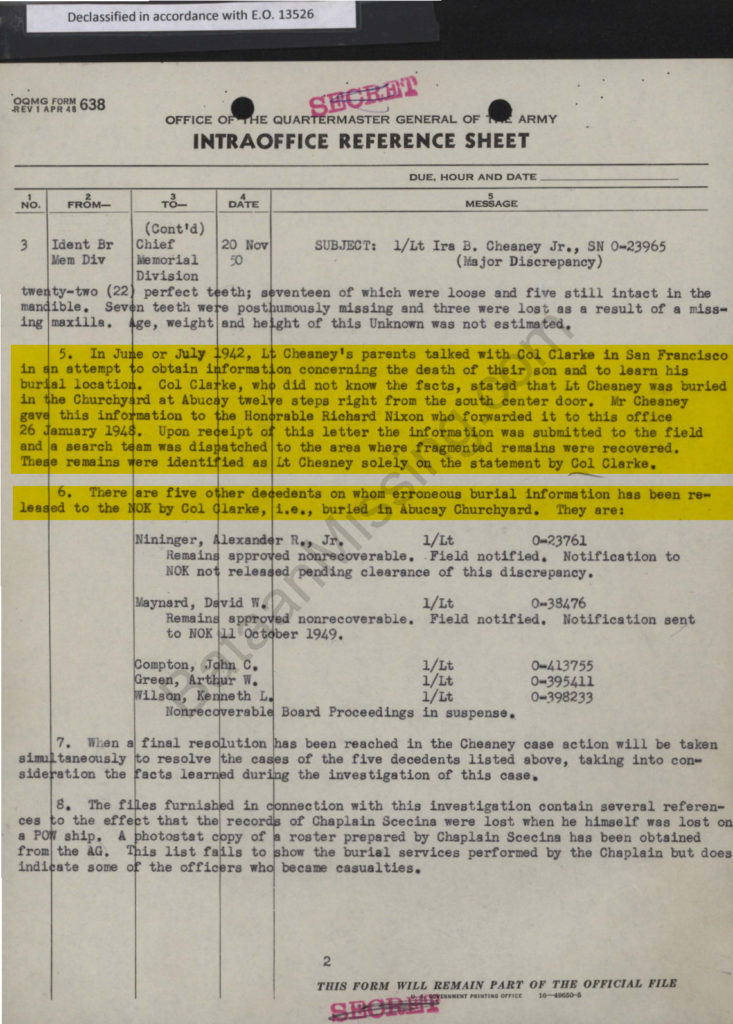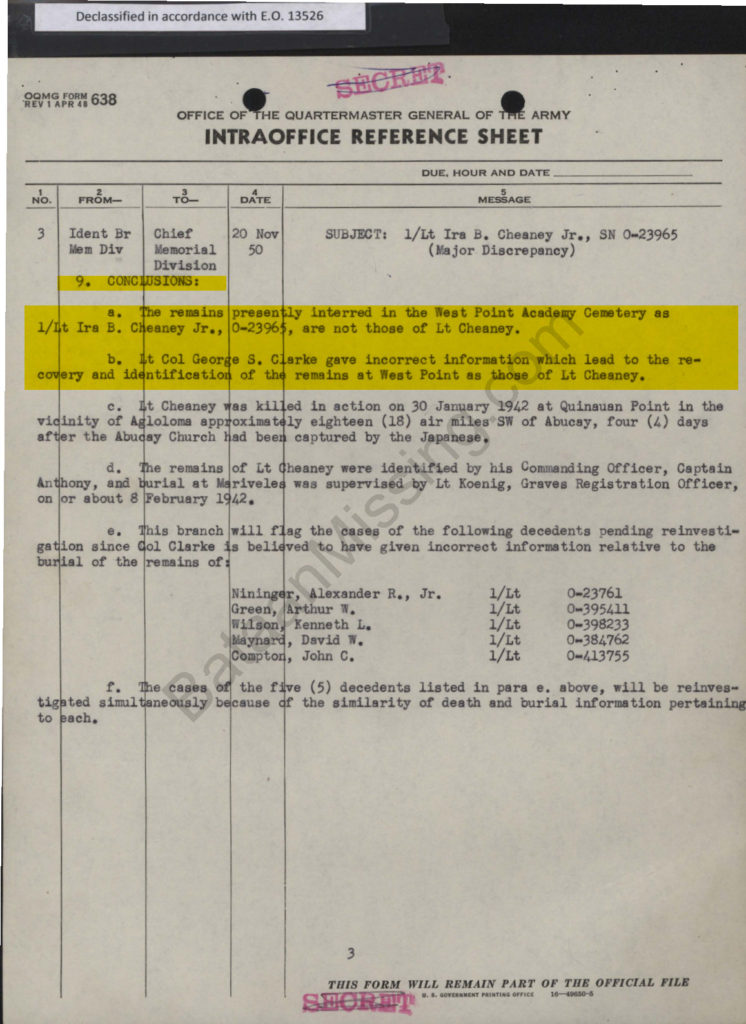A disgraced commander tries to rehabilitate his reputation
Many readers are familiar with 1LT Alexander “Sandy” Nininger, the first man awarded the Medal of Honor in World War II. Not so many know of his best friend, 1LT Ira Cheaney, recipient of the Distinguished Service Cross. Their stories are as intertwined in death as they were in life. What follows is one chapter in a story of great heroism offset by total bungling and corruption by the U.S. Government that continues to this day.
”READ_MORE”
In early January 1942, both Nininger and Cheaney were assigned to the 57th Infantry Regiment (Philippine Scouts). At that time, the 57th was assigned to hold the eastern most portion of the Main Line of Resistance on Bataan that ran west from Mabatang and Abucay on the east coast of the Bataan Peninsula, to the adjacent sector held by the 31st Infantry Regiment.
The engagements of 11-12 January, 1942 were costly to the 57th Infantry Regiment, costing the lives of six lieutenants and over forty enlisted men including:
1LT Alexander Nininger
1LT David W. Maynard
1LT Arthur W. Green
1LT John C. Compton
1LT Kenneth L. Wilson
It was during this time that Nininger was killed in the engagement that earned him the first Medal of Honor awarded in World War II. These were the very early days of the war soon after the Pearl Harbor attack and things were not going well for America. The country needed a hero, and “Sandy” Nininger was the right man for the job. The American public needed a morale boost and Nininger received the nation’s highest award with even more than the usual fanfare. Unfortunately, the award seems to have consigned his remains to a grave known only to God.
In the face of an unremitting Japanese assault, USAFFE forces withdrew from the Abucay line to new positions on the night of 24-25 January, leaving no active American forces in the village.
Within days, the 57th Regiment deployed to the southwestern coast of Bataan to repel a series of Japanese landings known as the Battle of the Points. Assigned to Company B, of the 57th Infantry, 1st Lt Cheaney deployed to Quinauan Point.

Quinaun Bay/Point, the location of the Battle of the Points, was adjacent to a point of land known as Aglaloma Point which was flanked by Aglaloma Bay.
It was during this engagement, on 30 – 31 January 1942, that 1st Lt Cheaney was killed – NOT in the town of Abucay.
On 7-8 February, when U.S. forces finally retook the area, Captain Eugene Anthony, commander of Company B, visually identified the body of 1st Lt Cheaney. Second Lieutenant (2d Lt) Fred Koenig, a graves registration officer of the 45th Regiment, told Capt Anthony that the remains would be taken to a U.S. Army cemetery in Mariveles, roughly ten miles away on the southern tip of the peninsula. Unfortunately, he didn’t specify which of the ten cemeteries in the Mariveles area he planned to take the remains to.
This is where things began to go wrong. Really badly wrong.
After the war, Cheaney’s family, quite rightfully, wanted his remains returned for burial at his alma mater, the U.S. Military Academy at West Point, NY. They had been told by their son’s former regimental commander, Colonel Clarke, that he had been buried in the Churchyard at Abucay.
Colonel Clarke, who had been relieved of his command, made it a point to contact the families of several of the young officers who had perished under his command. The, rather self-serving stories he told the families, perhaps in hopes of repairing his sullied reputation or perhaps to comfort the families, got a few details wrong. Clarke told the families that their sons had been buried in the Abucay Churchyard. Unfortunately, Clarke was no longer on Bataan when those who died at Abucay were buried and they were actually buried in the Abucay Town Cemetery – just a little detail that was to have huge ramifications. In the case of Ira Cheaney, he died more than two weeks after Clarke was relieved of his command and the Abucay engagements. At the time of Cheaney’s death, the town of Abucay was held by the enemy and he could not have been buried anywhere near there.
When the U.S. Army failed to provide a reasonable response to the families’ inquiries, the Cheaney family contacted their congressman, a young Richard M. Nixon, who was making quite a name for himself at the time. Several of the other families of those who had perished in the Abucay engagements had also spoken with Colonel Clarke and demanded answers from the Army and their congressional representatives.
The U.S. Army, wanting to please the families – and their congressional representatives -quickly exhumed some remains from the Abucay Churchyard. With no other evidence except Clarke’s description of the location of the grave being twelve steps from the door of the church, the remains were identified as those of Ira Cheaney, and buried at West Point in the post cemetery.
The Army, obviously aware of some discrepancies, conducted a fairly through investigation to try to sort things out and determine who they had buried at West Point. Ultimately, they determined that the West Point grave contained the remains of not Cheaney, but either Nininger or 1LT David Maynard. That was a problem as finding Nininger buried in Cheaney’s grave would make the Army look like a bunch of bungling boobs.
So the government decided to do the “right” thing – at least it was the right thing for the guilty – they made sure that all the witnesses told the “official” story. They then upgraded the file classification from CONFIDENTIAL to SECRET and hid the file away for the next sixty plus years. Great idea, bury the report as a defense secret until everyone retires.
In 2018, the file documenting the Army’s investigation – which was filed under Cheaney’s name rather than Nininger’s – was, perhaps accidentally, declassified and released to the public.


Clarke also provided erroneous burial information to the Nininger, Maynard, Compton, Green and Wilson families.


The erroneous information provided by COL Clarke was to have ramifications reaching far beyond just Ira Cheaney’s case.
”READ_LESS”
